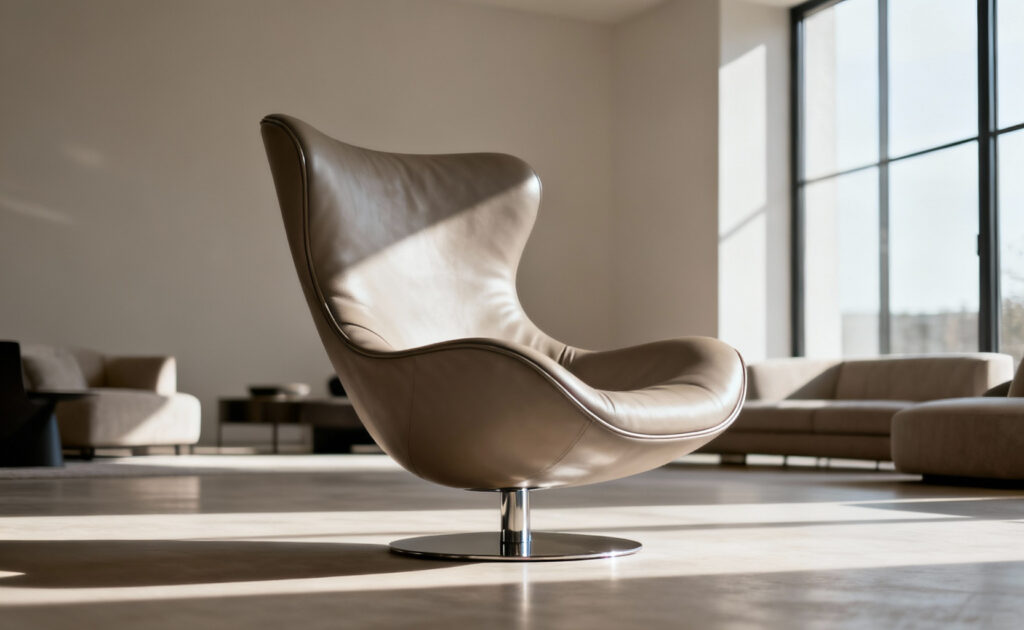Choosing how to furnish a home is, at its heart, an act of self-revelation—every choice reflects not just an aesthetic preference, but deeper values about how life should be lived. The most compelling interiors aren’t decorated; they’re authored. They tell coherent stories about their inhabitants’ journeys and their understanding of beauty’s role in daily life. From my work as a gallery curator, I’ve learned that a single object can anchor an entire narrative. The living room chair, more than perhaps any other piece, is that object.
It’s functional sculpture. It’s a point of view. It’s a quiet invitation to sit, to think, to connect. Moving beyond trends and instead toward an intentional, curated approach is what separates a space that simply looks good from one that truly feels right. These twenty principles are the framework I use—not just for placing art, but for choosing objects that behave like art, transforming a room from a collection of things into a cohesive personal gallery.
Deconstructing Form: The Chair as Philosophical Articulation
Before we even think about fabric or color, we must look at the chair as pure form, as a sculpture that happens to hold a person. How do its lines interact with the architecture of the room? What does its silhouette say before you even sit in it? This is about understanding the chair as an idea.
1. The Ergonomic Imperative: Where Body Meets Art
A chair’s first job is to hold the human body. But this isn’t a limitation; it’s the beautiful constraint that gives the form its meaning. The dialogue between biometrics and aesthetics is where magic happens. A truly exceptional living room chair doesn’t just look comfortable—its form promises comfort. The curve of the back, the height of the arms… these are lines in a drawing, and the drawing is of you, at rest. A masterwork, like the Eames Lounge Chair, is a perfect marriage of ergonomic science and sculptural beauty.
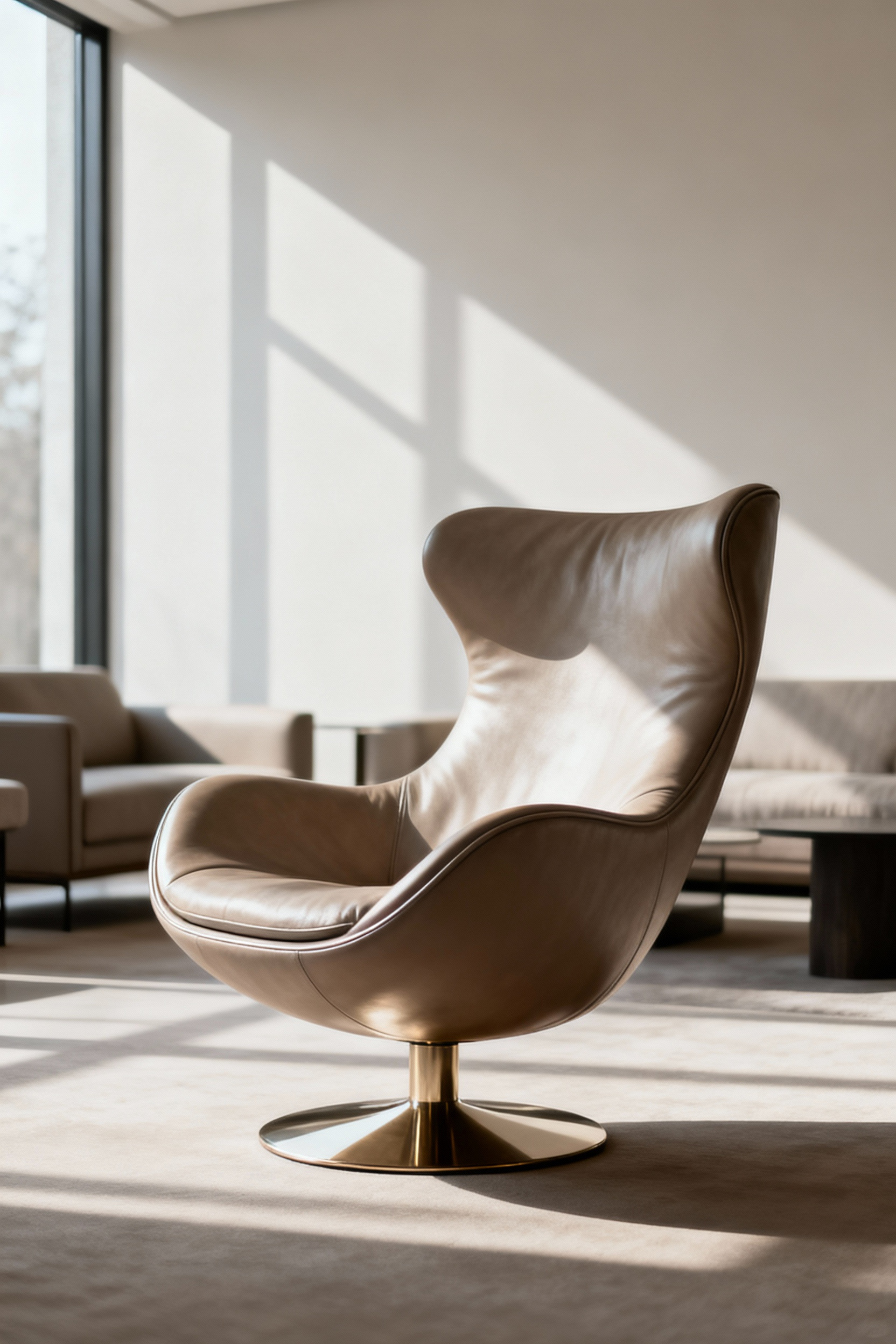
When a chair gets this right, the material choices become an extension of that promise. Think of advanced molded plywood shells that conform to the body’s contours or high-density foams that support without sacrificing a clean silhouette. It’s an alchemy of craft and science. I once saw an installation where the artist had created chairs from unconventional materials; what I learned was that even the most avant-garde form has to acknowledge the human body to be successful as a chair. It’s the anchor to reality.
2. Archetypal Forms: History in a Contemporary Dialogue
Certain shapes are etched into our collective memory: the sheltering embrace of a wingback, the stately posture of a club chair. Using these archetypal forms isn’t about repeating the past; it’s about engaging in a conversation with it. From my gallery curator background, what I find most exciting is seeing a familiar silhouette reinterpreted with a completely modern sensibility—a classic form rendered in a surprising new material. It creates a beautiful tension.
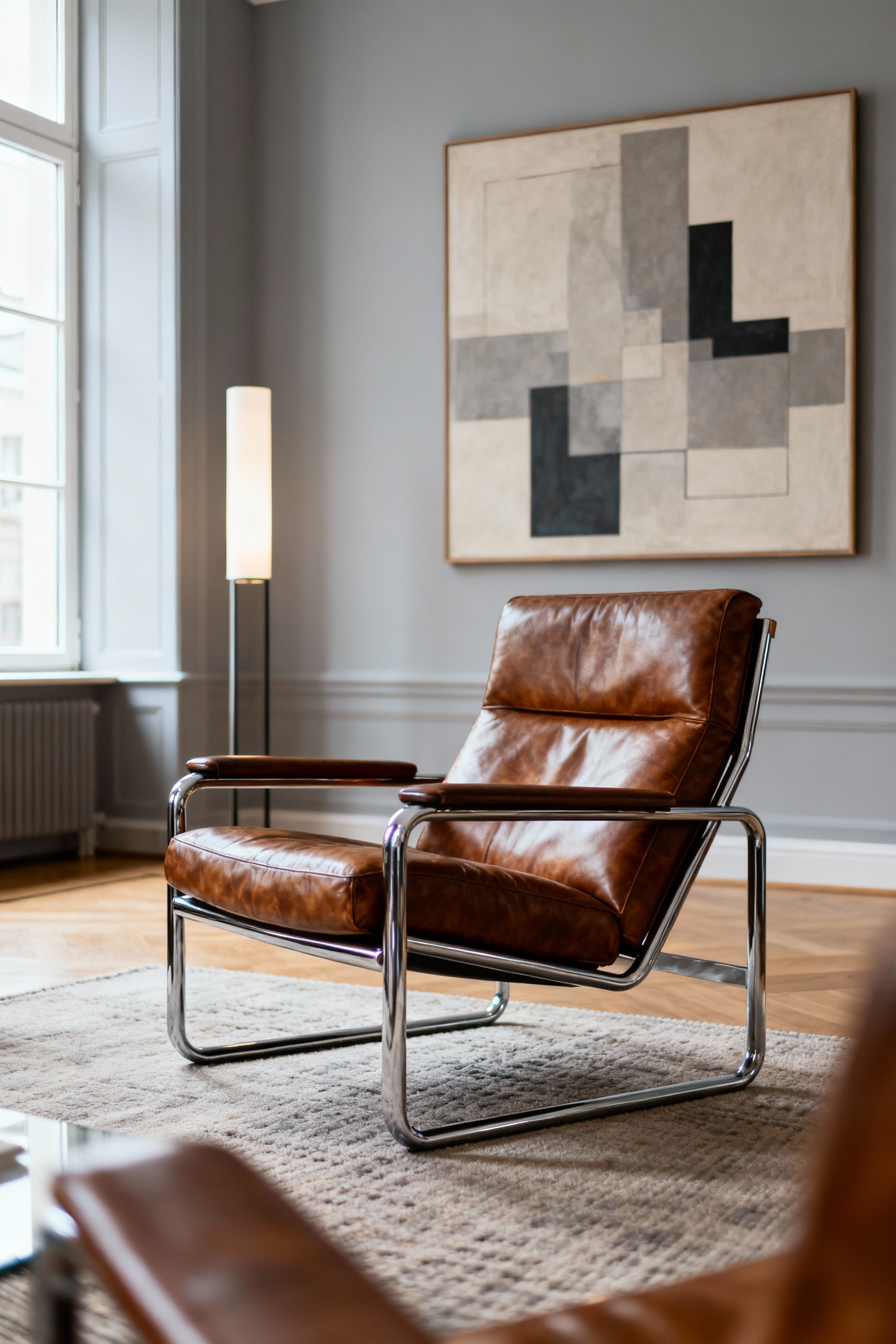
This approach anchors a contemporary space with a sense of history and permanence, preventing it from feeling untethered or trendy. It’s like placing a contemporary abstract painting next to an old master drawing; they speak to each other across time, each making the other more interesting. A living room chair with historical resonance suggests a thoughtful, layered understanding of design. It tells your guests that you appreciate where we’ve been, and you know where you’re going.
3. Scale and Proportion: The Art of Visual Weight
No piece exists in a vacuum. A chair is a participant in the room’s composition, and its scale is its voice. Too large, and it shouts. Too small, and its voice is lost. The balance isn’t just about its physical footprint, but its visual weight. A chair with slender legs and an open frame can have a large footprint but feel light, while a dense, fully upholstered piece can feel massive even if it’s small.
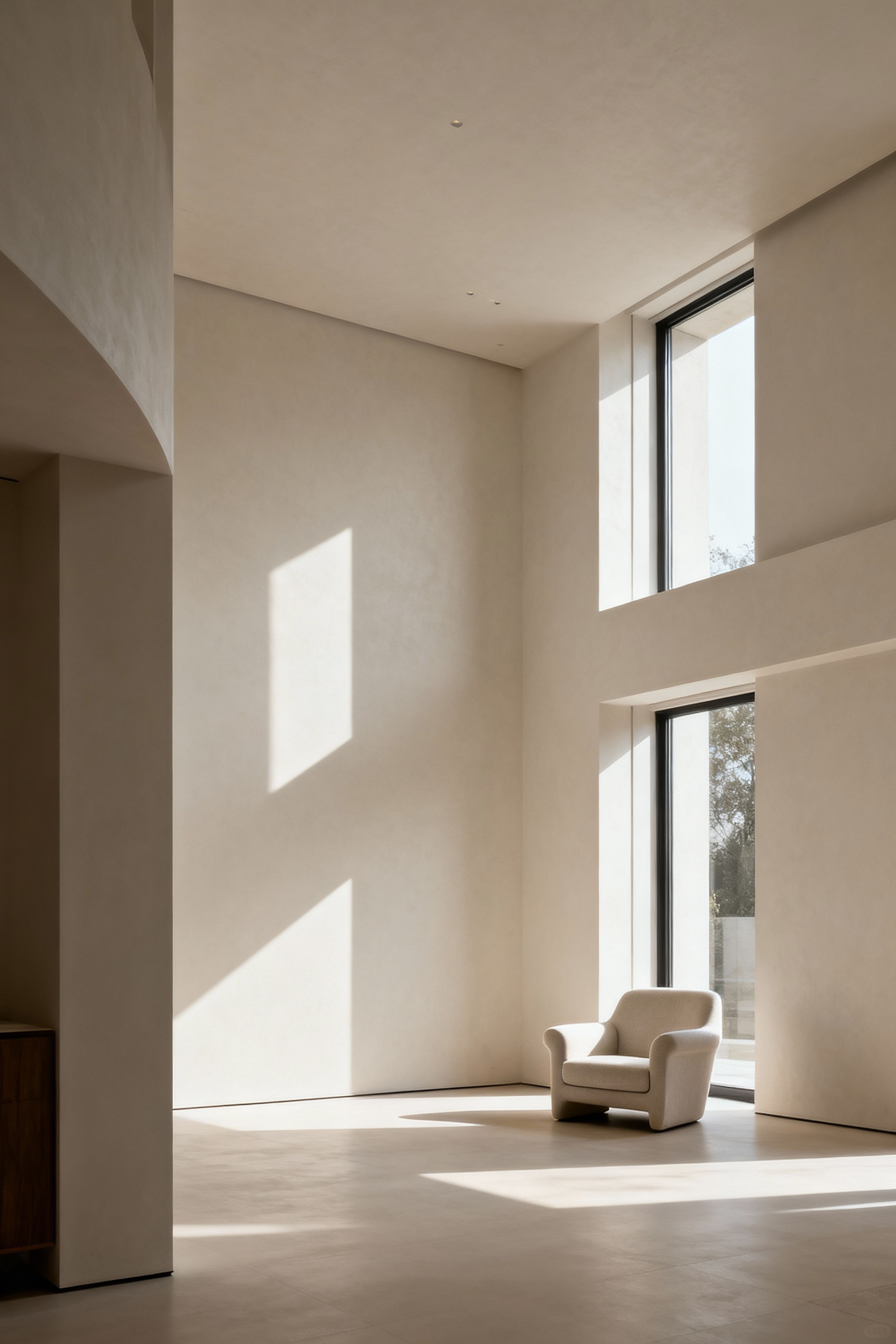
Mastering this is like hanging an exhibition. You have to consider sightlines from the doorway and how a large sculpture will affect movement through the gallery. The living room chair can serve as the monumental work that anchors a room or as a smaller, complementary piece. What I always tell emerging collectors is to trust their eye. Does the piece feel grounded? Does it command its space without overwhelming it? That balance is the key to creating harmony.
4. The Unseen Dialogue: Engaging with Negative Space
What’s truly exciting for me is not just the object itself, but the space around it. The air, the light, the emptiness—that’s negative space, and it’s one of the most powerful tools in design and curation. A great living room chair is defined as much by its voids as by its solids. The opening under an armrest, the gap between the legs, the shape of the air framed by its back—these are active design elements.
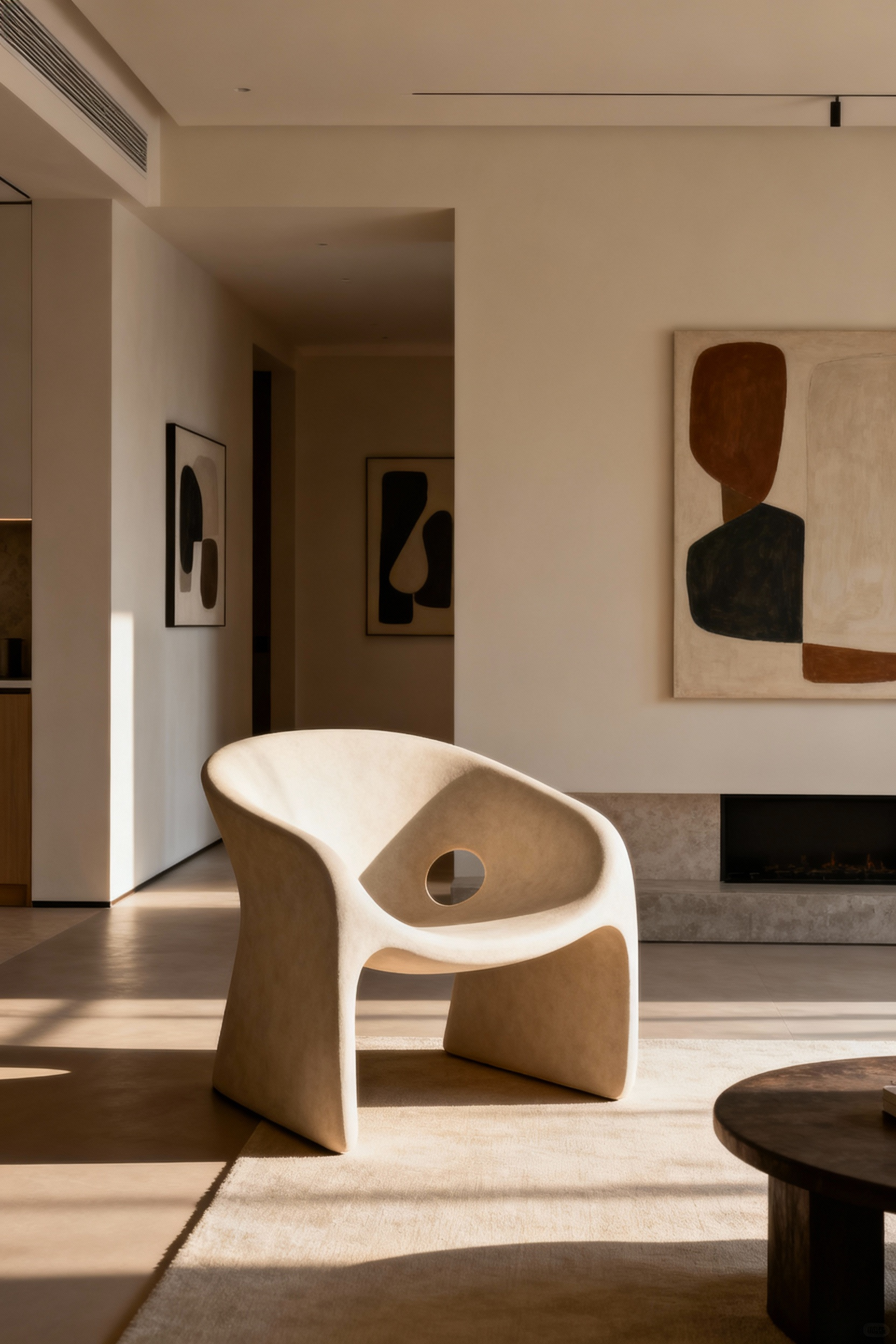
A chair with an open, architectural frame doesn’t block the view; it frames it. It allows light and air to pass through, creating a sense of spaciousness. I learned this when installing a Giacometti sculpture; its power came from how its impossibly thin form carved up the space around it. Think of your chair in the same way. It’s not just taking up space; it’s shaping the space it inhabits.
5. Articulating Postural Narratives: The Chair as Director
Every chair subtly directs how you should sit in it. A deep, low-slung lounge chair invites you to recline, to settle in for hours with a book. A more upright, formal chair encourages alertness and conversation. This “postural narrative” is the unspoken contract between you and the object. Before you even buy it, you’re making a decision about the kind of activity you want to happen there.
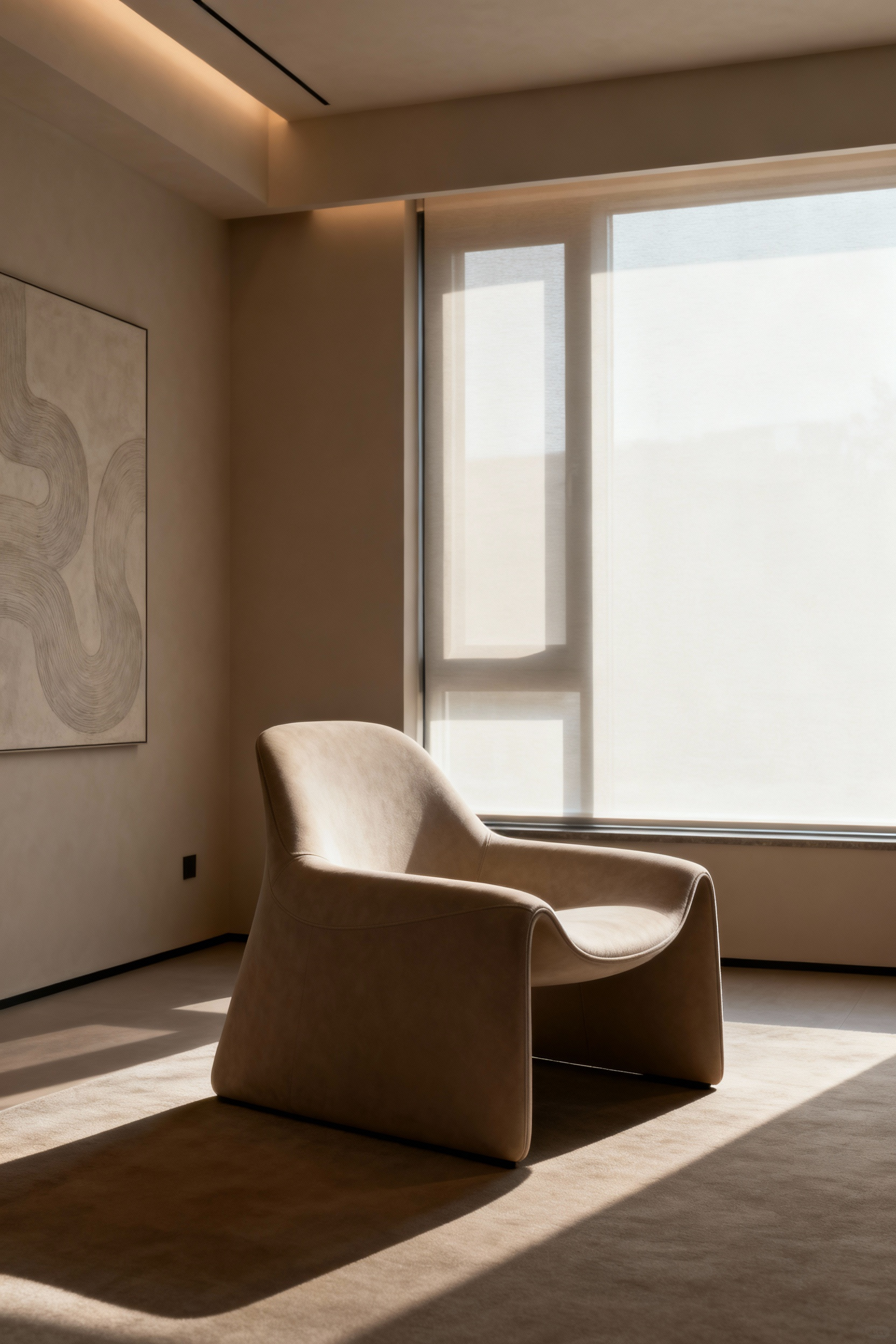
This choice directly shapes the social dynamics of a room. A pair of engaging, forward-leaning chairs creates a natural conversational hub. A solitary chaise tucked in a corner carves out a sanctuary for quiet thought. What I love is curating these different “modes” of living within one space. By choosing a living room chair for its postural story, you’re not just decorating; you’re choreographing the human experience within your home.
Tactile Narratives: Performance, Pliability, and Pedigree
The visual is only half the story. How a chair feels—its texture, the way it yields, the materials it’s made from—is a critical part of its narrative. This is where the intimate, sensory experience of an object comes to life.
6. Advanced Upholstery Science: The Skin of the Object
The fabric on a chair is its skin. It’s the first point of contact, and it communicates everything about performance and personality. As a curator, I’m obsessed with provenance and materials. Look beyond color and pattern to the science of the textile: Is it rated for high traffic (look for Martindale or Wyzenbeek rubs)? Does it drape beautifully over the chair’s form? And what are its eco-credentials?

Today, sustainable materials like recycled synthetics or renewable linens aren’t just an ethical choice; they often bring incredible texture and character. A chair’s upholstery tells a story about durability, comfort, and values. It’s the most immediate signal of quality, and it’s worth investigating with the same rigor you’d apply to researching an artist.
7. The Engineered Frame: An Object’s Unseen Skeleton
What separates a piece that lasts a lifetime from one that lasts a few years is often what you can’t see: the frame. It’s the hidden armature of the sculpture. A solid, kiln-dried hardwood frame with proper joinery—like mortise-and-tenon or dovetail joints—is the mark of true craftsmanship. This isn’t just about longevity; it’s about integrity.
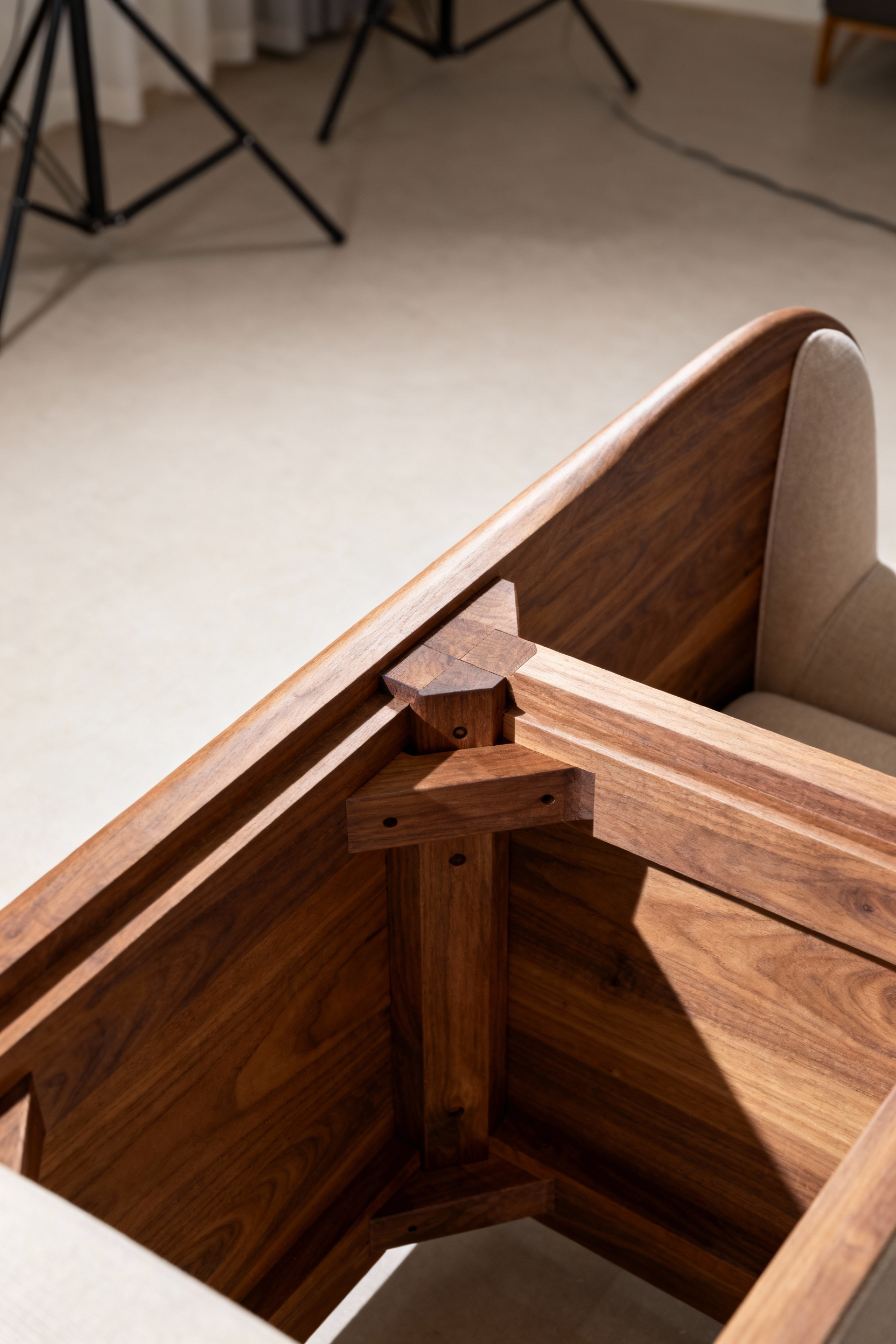
A well-built frame ensures the living room chair maintains its intended silhouette and provides unwavering support over decades. When I assess a piece of art, I look at its construction just as closely as its surface. A poorly constructed object, no matter how beautiful, lacks soul. The same is true for furniture. Investing in a piece with a superior frame is a statement that you value enduring quality.
8. The Patina of Purpose: Wood’s Evolving Story
Visible wood on a living room chair is a living surface. Unlike synthetic materials that degrade, wood ages, developing a patina that tells the story of its life in your home. The soft gleam on an armrest from years of touch, the subtle deepening of color—this is the object’s memory. It’s an honest beauty that can’t be faked.
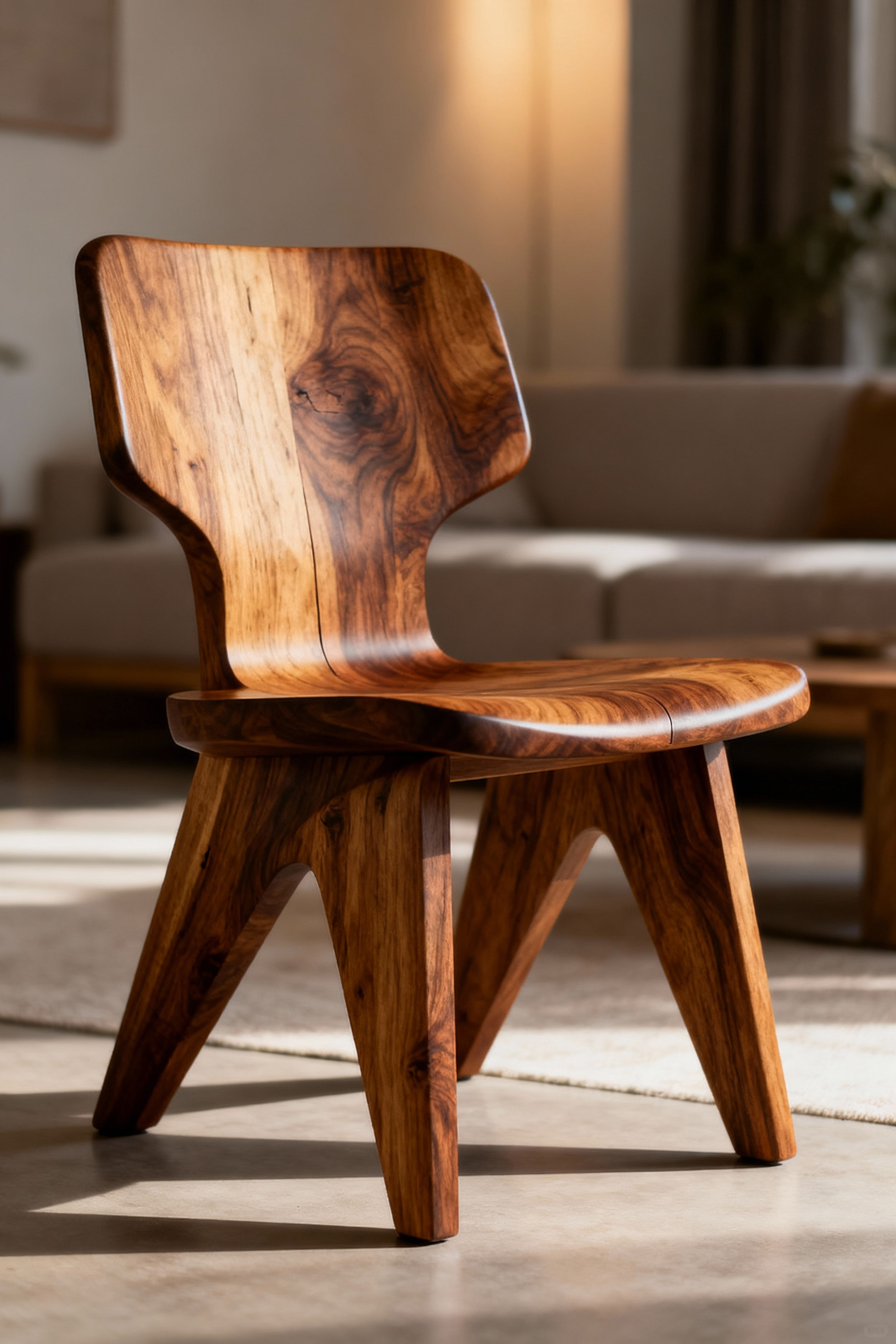
Furthermore, a curator’s eye requires attention to ethical sourcing. Look for certifications like FSC (Forest Stewardship Council) to ensure the wood’s beauty doesn’t come at an ecological cost. Choosing a chair with responsibly sourced, beautifully aging wood makes it more than just an object. It becomes a testament to natural beauty and responsible stewardship, a grounding element in any room.
9. Innovating with Metalwork: Strength as Sculpture
Metal introduces a different language: one of precision, reflection, and structural daring. A metal frame can create forms that are impossible with wood, achieving a visual lightness that seems to defy gravity. Think of the slender, cantilevered chairs of the Bauhaus or the polished gleam of a mid-century classic. Metal allows a living room chair to be both incredibly strong and elegantly minimal.
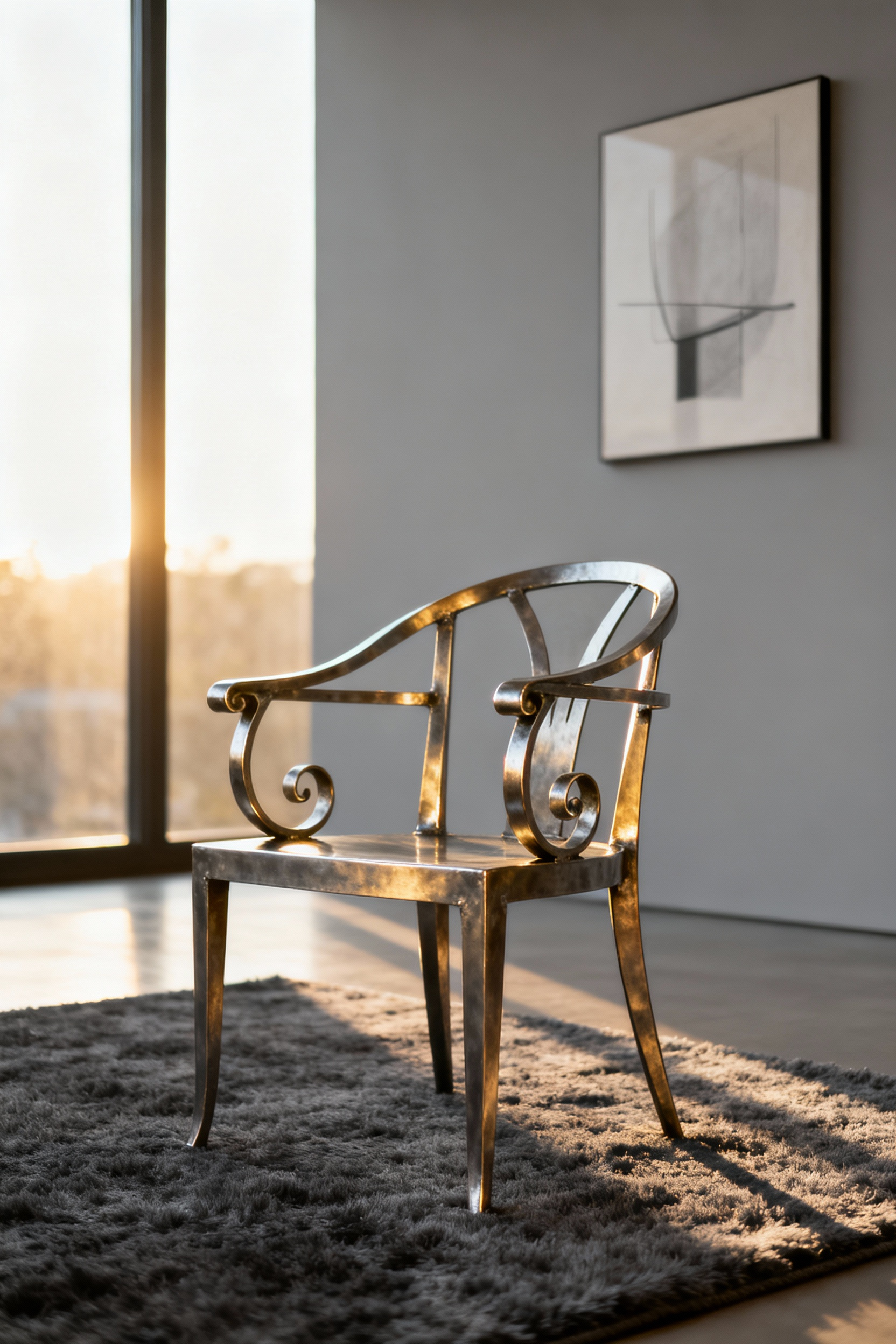
What’s interesting to me is how different metals and finishes create entirely different moods. Polished steel feels crisp and architectural. Brushed brass adds a layer of warmth and sophistication. Blackened steel has a raw, industrial gravitas. In my experience, a metal-framed chair can act like a line drawing in a three-dimensional space, defining form with incredible precision and grace.
10. Synthesizing Textural Layers: A Multi-Sensory Experience
The true mastery comes in how different textures play together. A living room chair is rarely made of a single material. The interplay between a cool metal frame and a warm, nubby bouclé seat, or a smooth wooden armrest and a supple leather cushion—this is where design becomes a multi-sensory experience. It invites you to look and to touch.
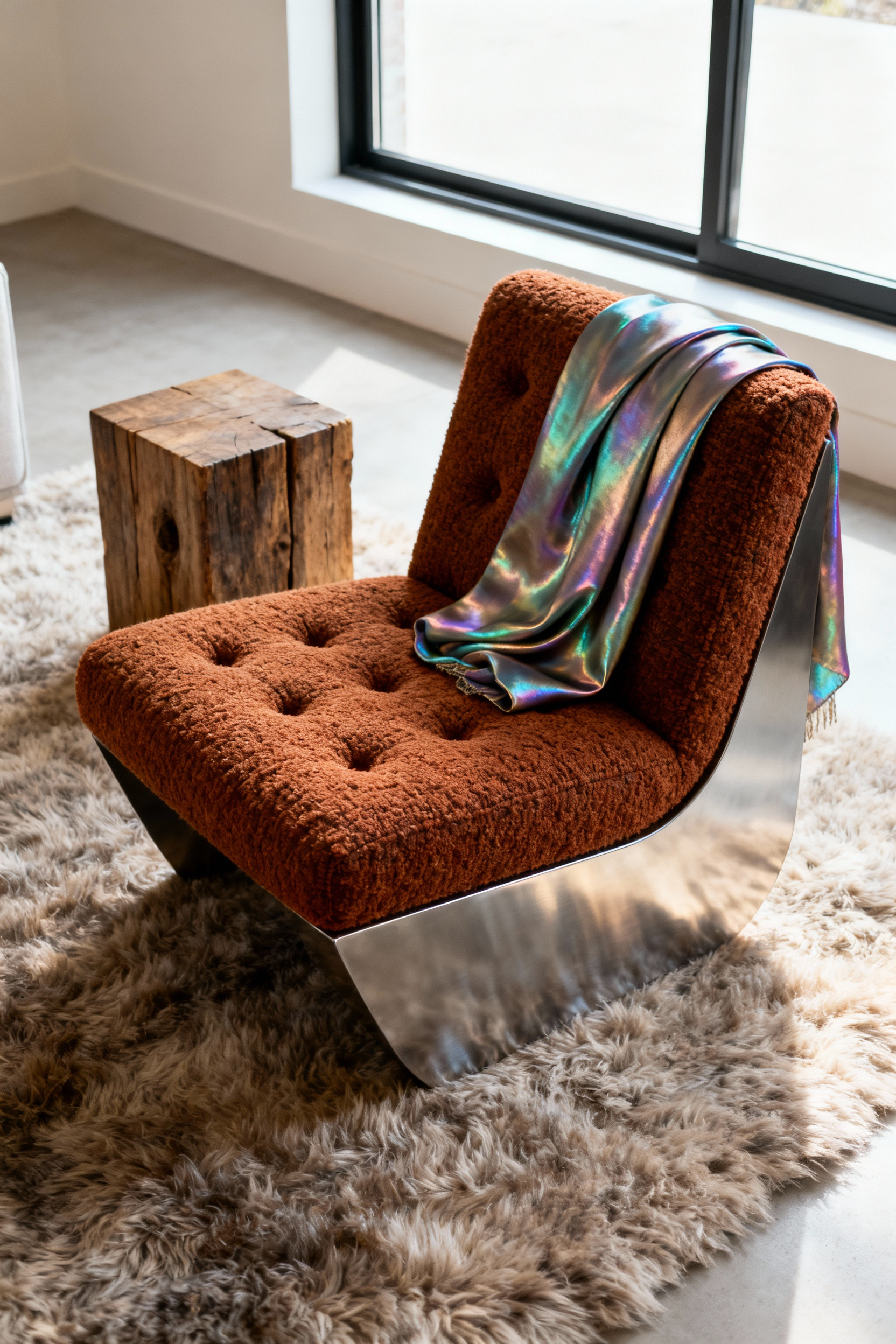
When curating a gallery space, I think a lot about how different textures in a room can work together to create a feeling. Hard surfaces need soft counterparts to feel balanced. A single chair that combines these elements can be a microcosm of that philosophy. It’s a piece that offers visual contrast and tactile delight all at once, making it endlessly compelling.
Curating Context: The Chair in Dialogue with Its Space
A chair is never an isolated object. It’s part of a larger composition, and its success depends on its relationship with everything else in the room—the art, the light, the other furniture, and the people moving through it.
11. Anchoring Visual Pathways: Guiding the Eye
In a gallery, I use a major work of art to anchor a wall and guide how people move through the space. Your living room chair can do the same thing. A chair with significant visual weight—due to its size, color, or dramatic shape—can serve as a powerful focal point. It’s the first thing you see, and it tells you where to look next.
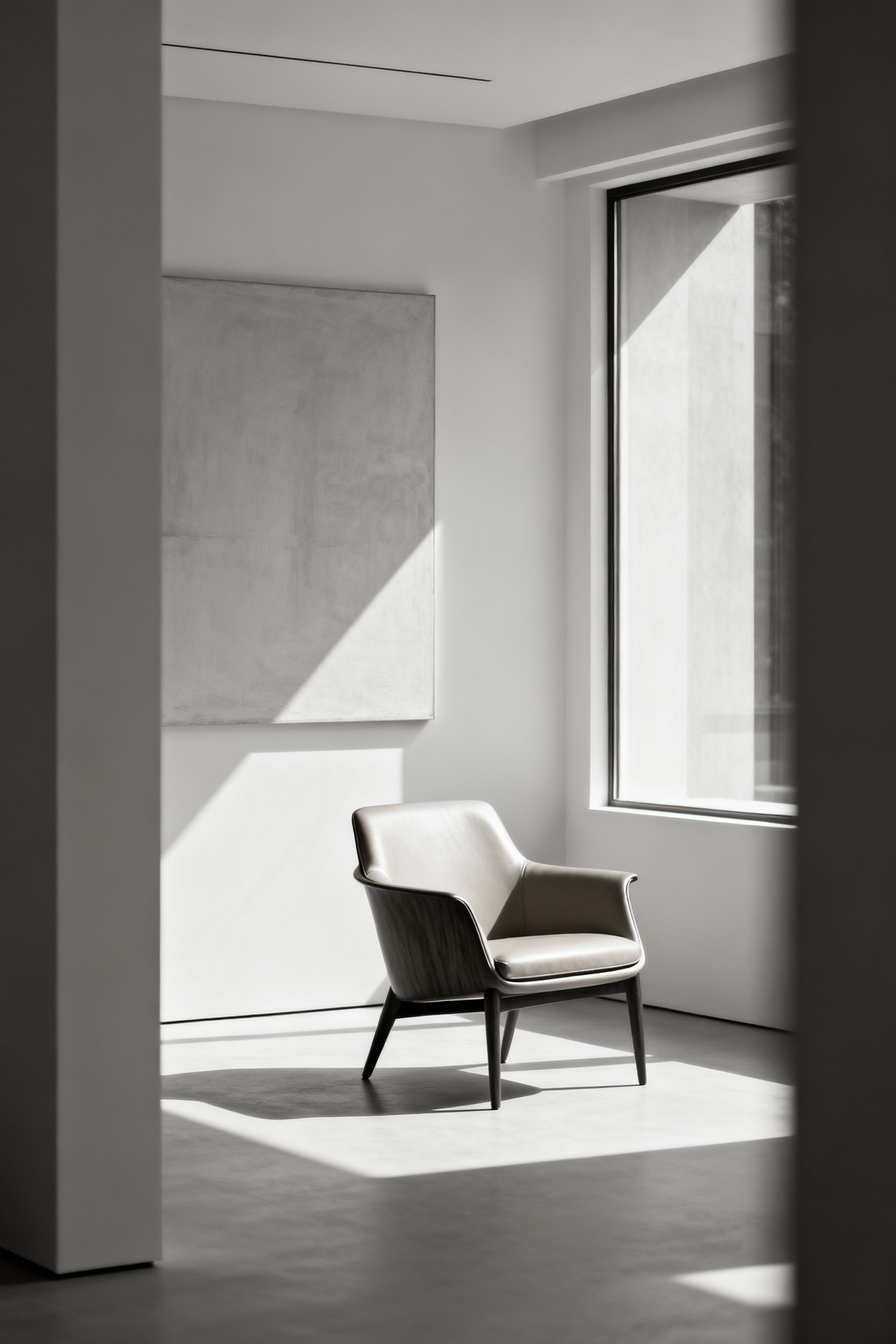
Think about the sightline from the main entrance to your living room. What’s the first thing you want people to see? Placing a stunning chair there establishes an immediate sense of intention. It says, “This space is considered. This space has a point of view.” You are quite literally curating the experience of your own home.
12. Harmonizing Proximal Groupings: Creating Conversation
Furniture should be in conversation. A single living room chair is a statement, but a grouping of pieces is a story. How does your chair relate to the sofa, the side table, the lamp? Do they share a material, a historical period, or a certain formal quality? Or do they stand in compelling contrast?
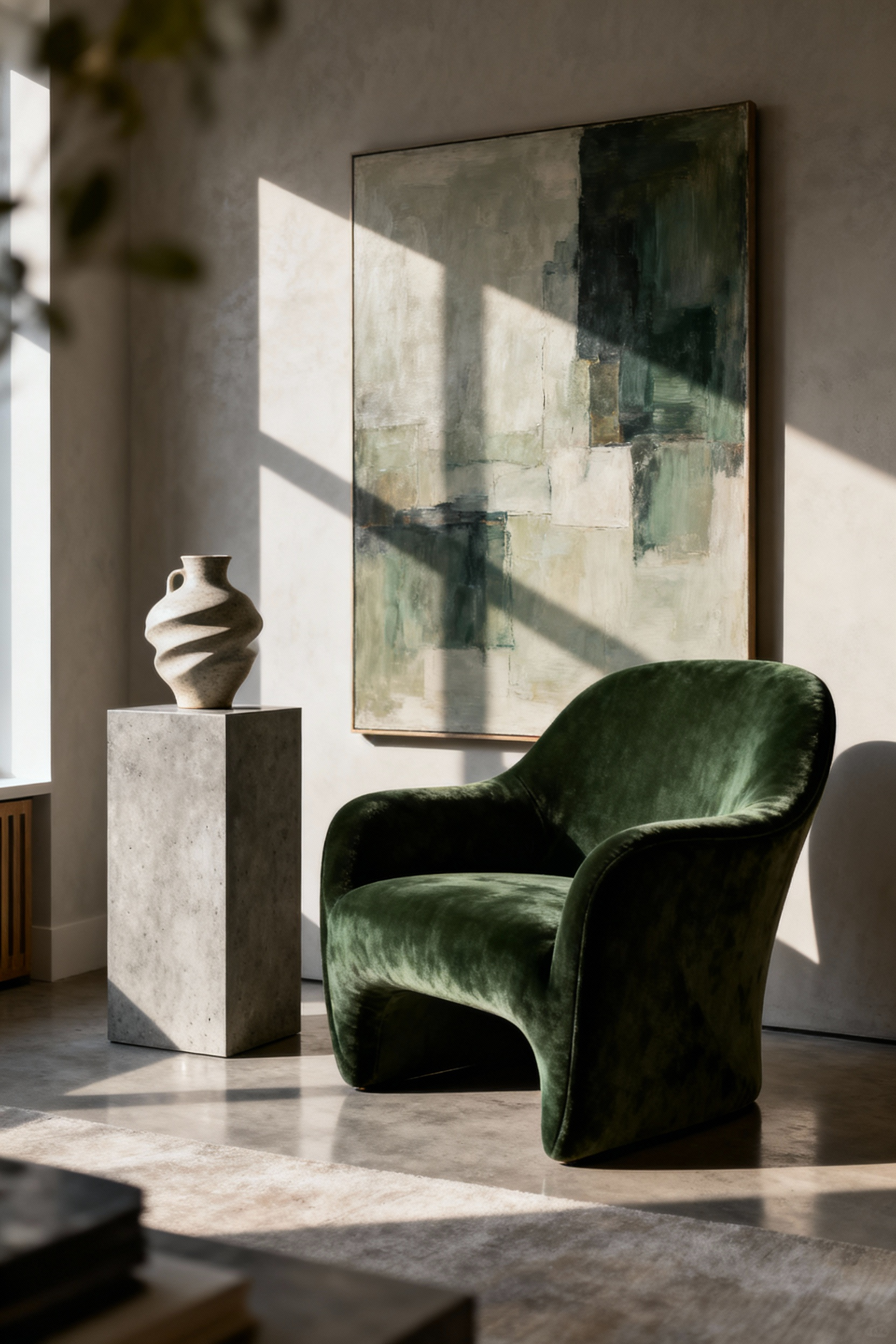
What I love about arranging art is finding unexpected pairings that create a third meaning. The same applies here. A sleek leather chair next to a rough-hewn wooden table creates a dialogue between refined and rustic. These curated groupings transform a collection of objects into a cohesive environment, creating natural zones for intimacy and connection.
13. Interacting with Light: The Chair as a Canvas
Light is a material. It’s invisible, but it has the power to completely transform an object. The way ambient light, both natural and artificial, falls on your living room chair will reveal its character. It’s why lighting a sculpture in a gallery is so critical. The right light can emphasize texture, define form, and create dramatic shadows.
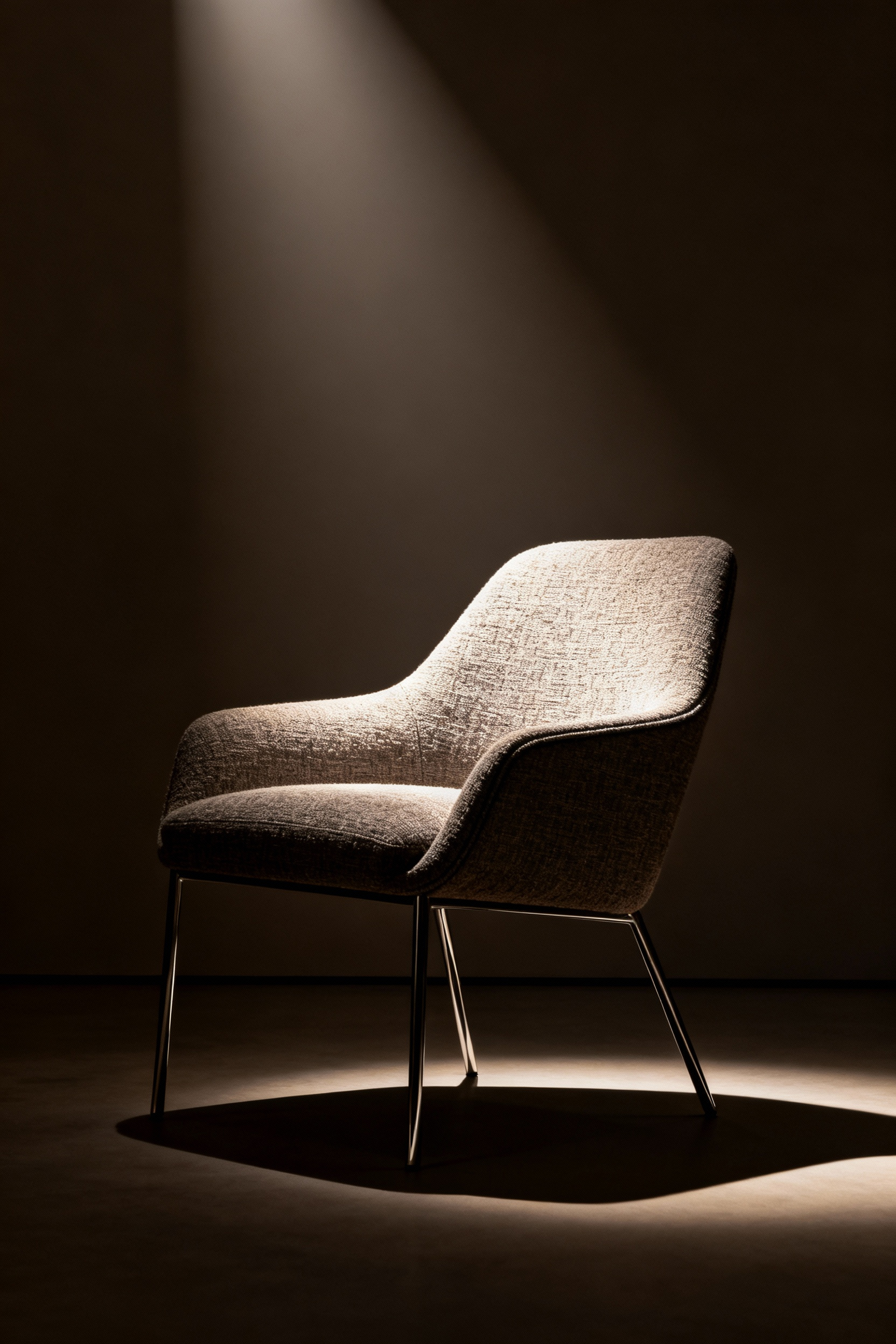
Place your chair near a window and watch how its appearance changes throughout the day. A richly textured fabric will come alive, while a reflective metal frame will catch the light. At night, a well-placed reading lamp can turn the same chair into a cozy, intimate haven. Thinking about your chair’s relationship with light is one of the most effective ways to elevate it from furniture to art.
14. Defining Spatial Zones: Rooms Within Rooms
In a large, open space, a cluster of chairs can create implied rooms without building walls. This is a classic curatorial strategy for managing flow and creating distinct experiences within a single gallery. A pair of chairs facing each other near a fireplace immediately defines an intimate conversational zone, separate from a more open, social area.
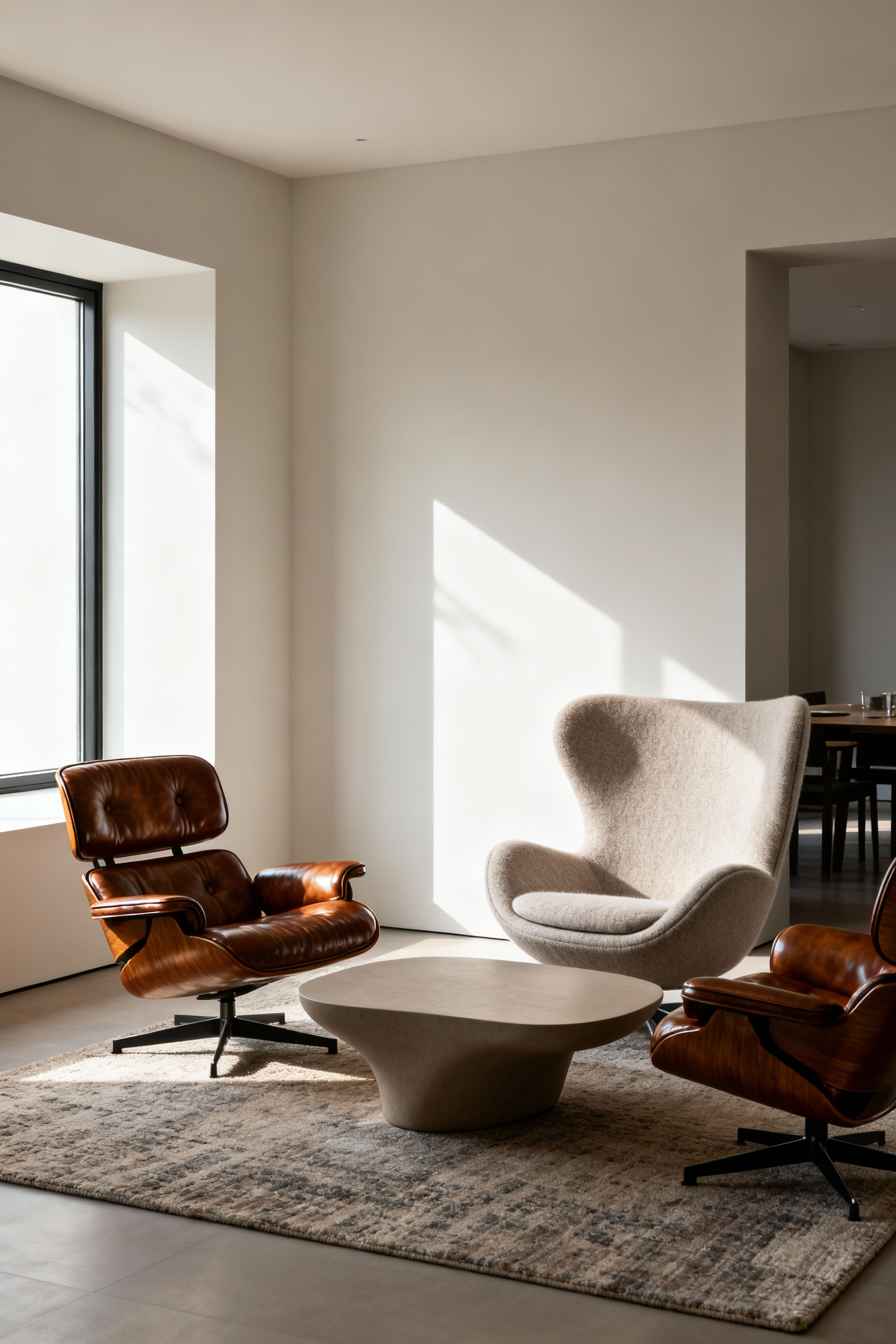
A living room chair with a high back can act as a subtle screen, creating a sense of privacy for a reading nook. By using furniture to articulate function, you create a space that is both open and organized, fluid yet intentional. It’s a sophisticated way to add architectural intelligence to a room using the objects within it.
15. Beyond the Horizon Line: The Power of Grounded Forms
We so often design at eye-level, but there’s a profound elegance in engaging with the floor plane. A low-slung living room chair, one that sits close to the ground, can completely change the feeling of a room. It feels anchored, stable, and incredibly inviting. It draws your eye downward, making you aware of the entire volume of the space, not just the upper half.
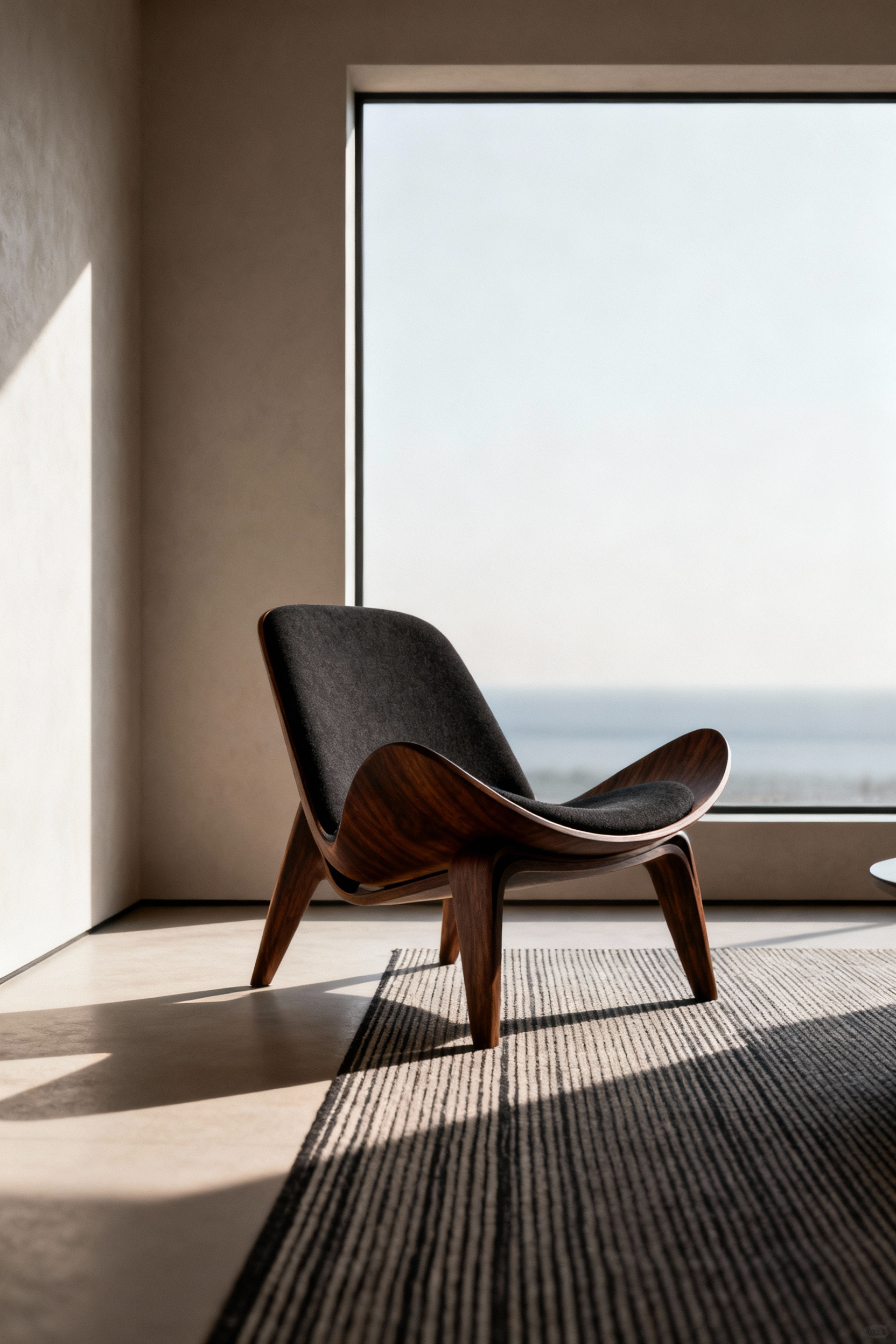
This approach creates zones of heightened intimacy and encourages a different kind of posture—one of deep relaxation and contemplation. In my work, I’ve seen how a low sculpture can ground an entire room, giving it a sense of calm and permanence. A chair can do the same, offering a powerful counterpoint to the frenetic pace of modern life by inviting you to literally come down to earth.
The Human Cadence: Your Chair, Your Sanctuary
Ultimately, a chair must serve the rhythms of your life. It must be more than beautiful; it must be a place of refuge, a tool for living, and a reflection of you. This is where curation becomes deeply personal.
16. The Evolution of Comfort: Support for a Modern Life
Comfort is not just about soft cushions. It’s an engineered science that supports the many things we do in a chair: reading, talking, working on a laptop, or just quietly thinking. A thoughtfully designed living room chair accounts for this, offering support that adapts to different postures and prolonged use.
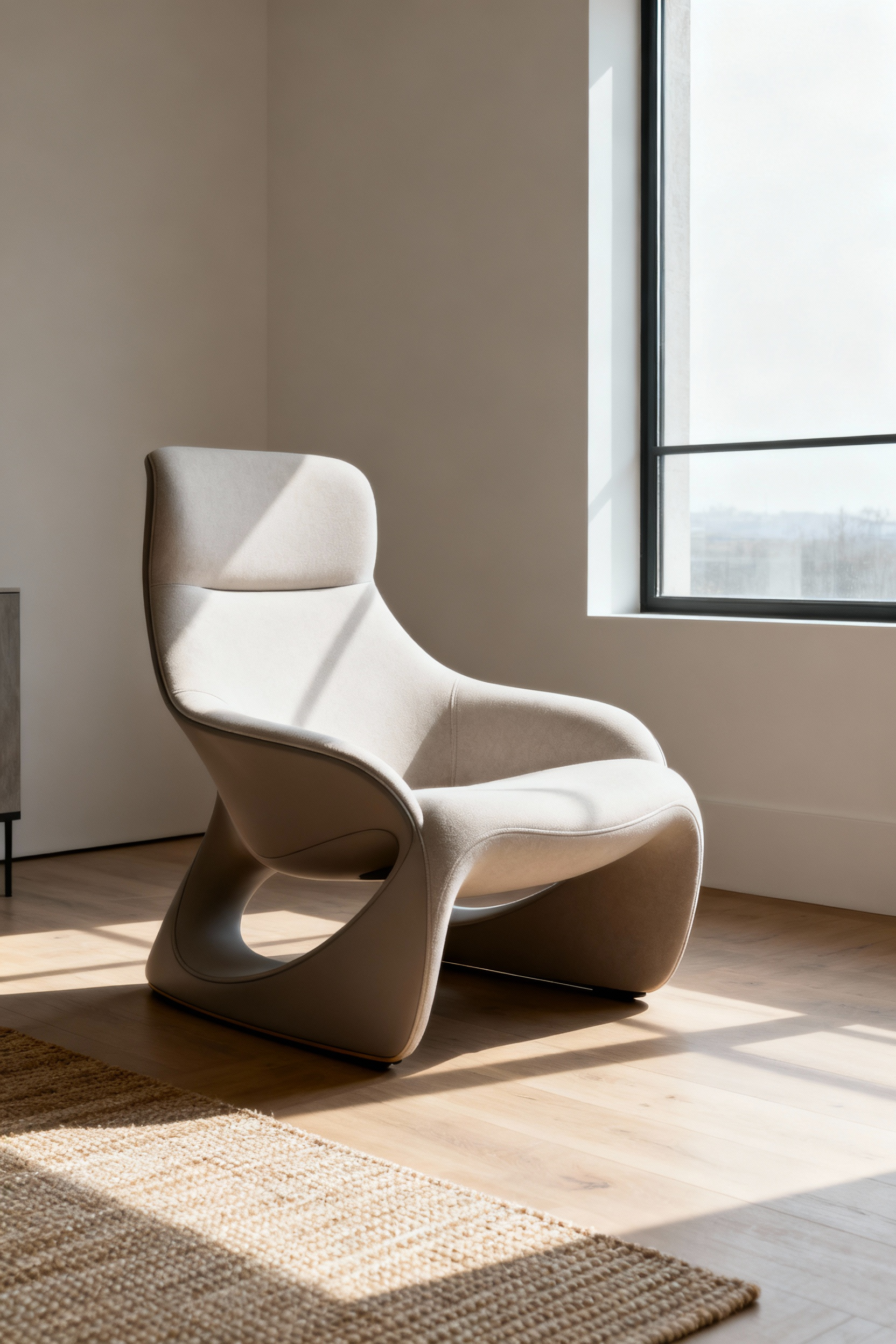
Look for pieces with high-quality suspension and multi-density foams. These elements, though hidden, are what allow a chair to be both structurally beautiful and genuinely restorative. An uncomfortable chair, no matter how iconic, is a failed object. True luxury is when an object serves your well-being as elegantly as it serves your aesthetic.
17. Anticipating the Future: Adaptive, Timeless Design
Your life isn’t static, and the best objects can evolve with you. An adaptive design is one that isn’t locked into a single configuration or style. Perhaps it’s a modular piece that can be reconfigured, or simply a classic, elemental form that will look right in any future home. It’s about choosing a living room chair for its timelessness, not its trendiness.
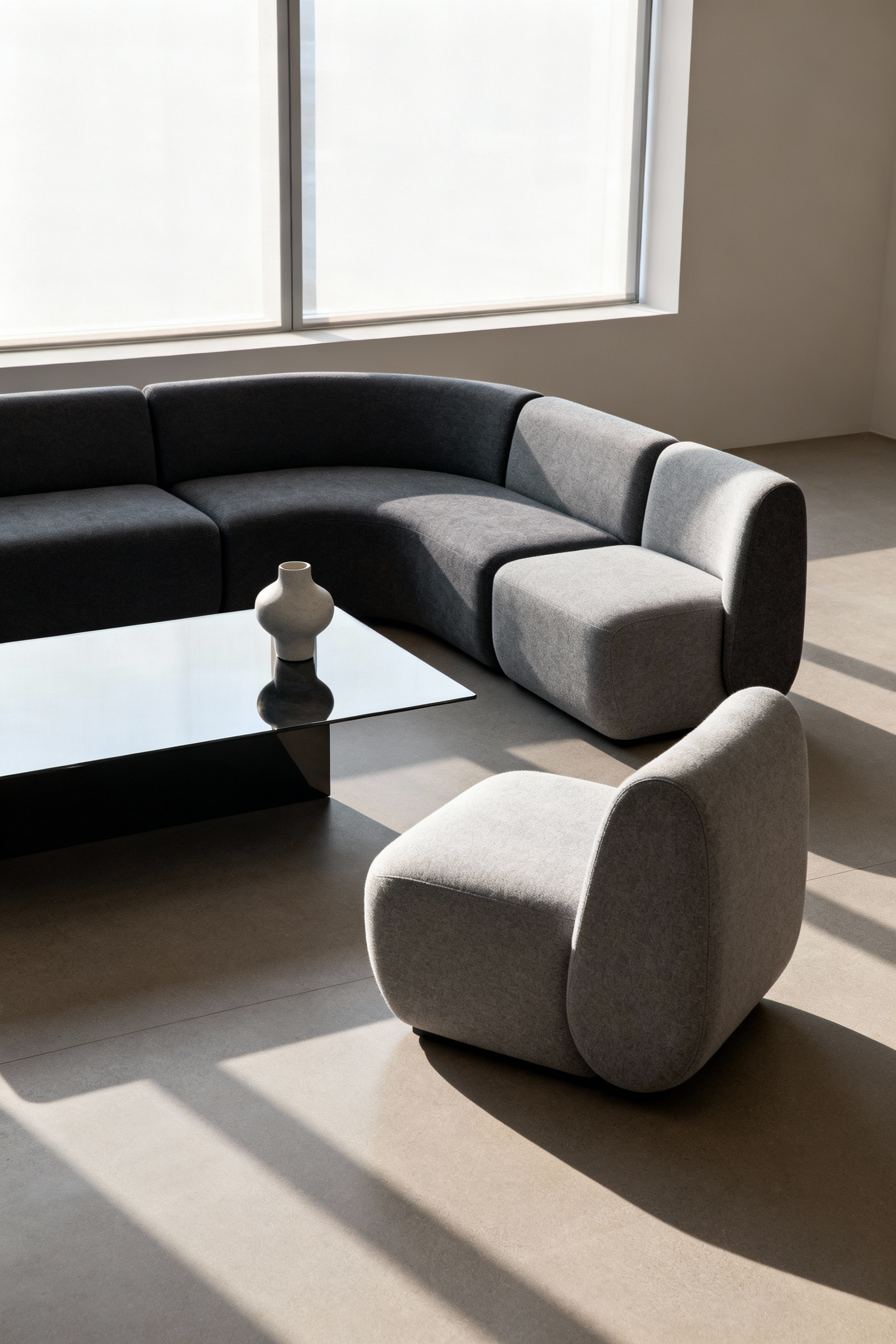
I’ve learned this from watching the art market. The pieces that endure are those with a strong, clear point of view that isn’t tied to a fleeting moment. Selecting a chair with this kind of foresight is a wise investment. It becomes a constant, a familiar piece of your personal history that moves with you through the chapters of your life.
18. Preserving Authenticity: Maintenance as Stewardship
In the art world, we don’t discard a masterpiece when it shows its age; we conserve it. I believe we should treat our most cherished furnishings with the same respect. Embracing maintenance and repair is an act of stewardship. It’s a commitment to the object and its history. A chair with honest wear is an object with a soul.
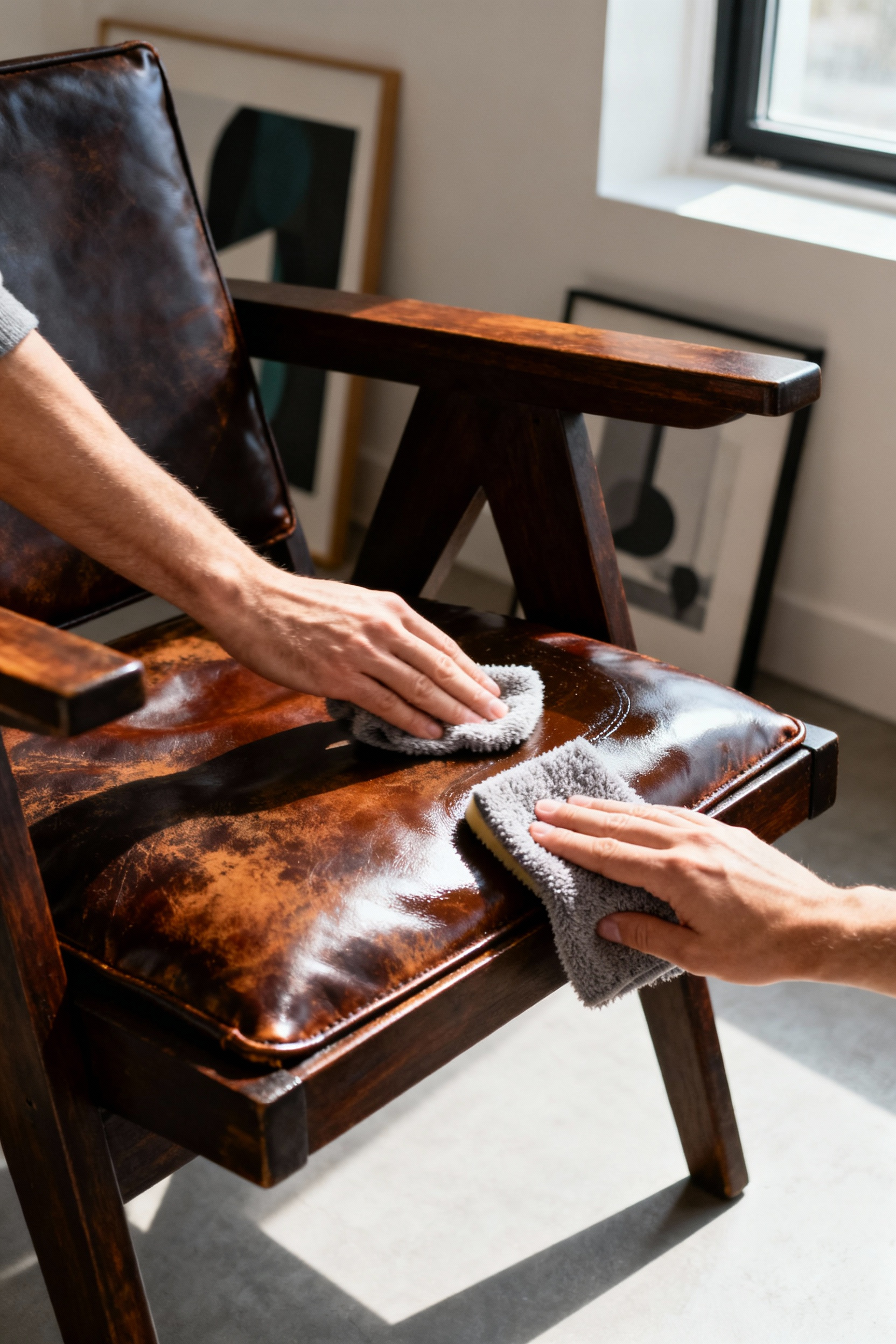
Choose a living room chair made from repairable materials like solid wood, leather, and high-quality textiles. Learning how to care for it—oiling the wood, conditioning the leather—creates a deeper relationship with the piece. It shifts your role from consumer to custodian, preserving a piece of your own story for the future.
19. Cultivating a Legacy Piece: Investing in Enduring Value
Some chairs are more than furniture; they are design artifacts. Recognizing a potential legacy piece is about understanding craftsmanship, design history, and timeless appeal. It’s about choosing an object that could one day become an heirloom, a piece that carries not just monetary value but sentimental and cultural weight.
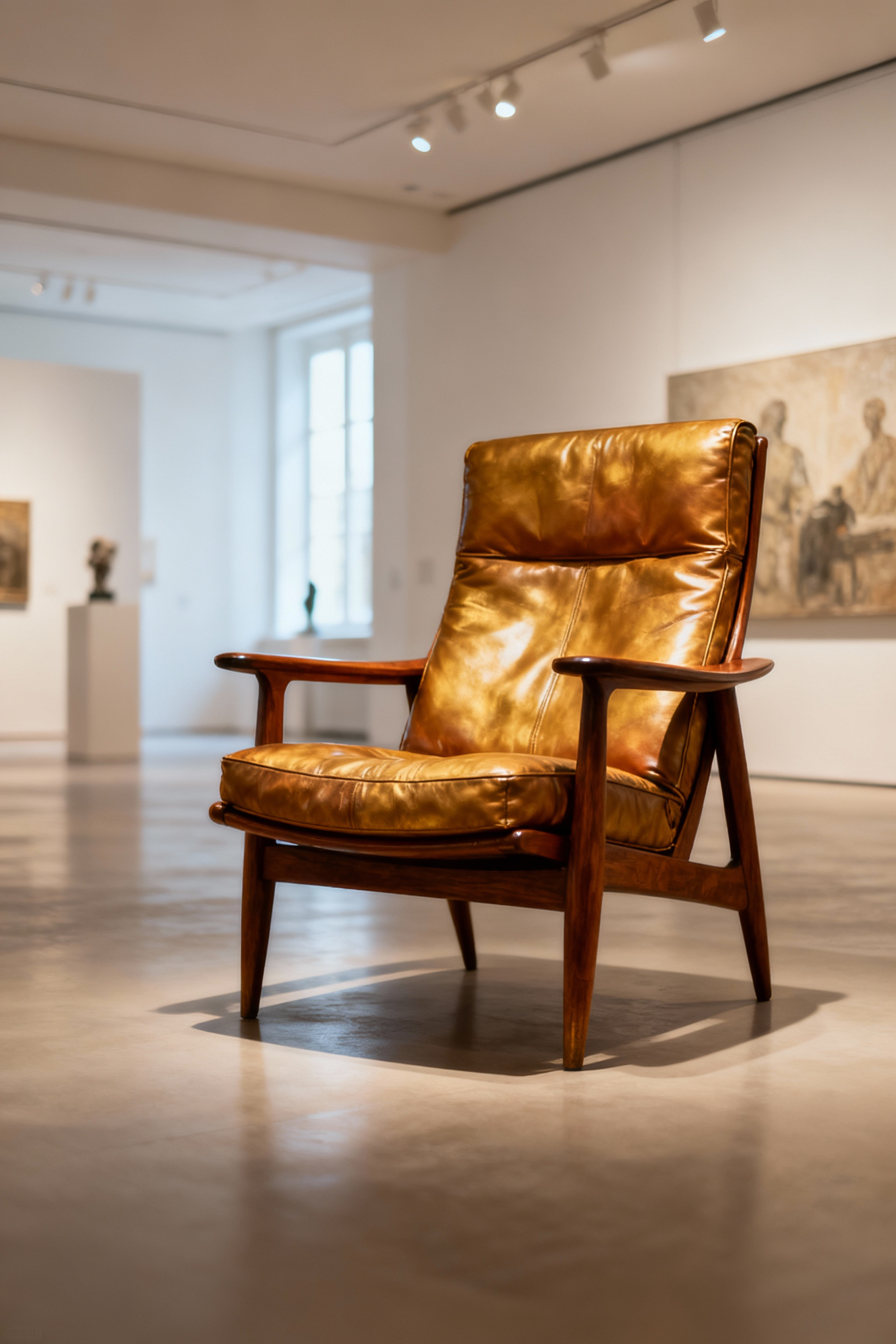
This means investing in uncompromising quality and iconic design. A living room chair by a master like Hans Wegner or Finn Juhl is not just a seat; it’s a piece of history, an investment in the art of living. It becomes the anchor of your collection, a piece that elevates everything around it and holds a story that will be passed down.
20. Reflecting You: The Chair as Self-Portrait
Finally, and most importantly, the living room chair you choose is a reflection of you. It’s a form of self-expression. Does your personality resonate more with the organic warmth of Scandinavian modernism, the bold geometry of Italian design, or the minimalist rigor of the Bauhaus? Forget trends. What form, what material, what story speaks to your inner world?
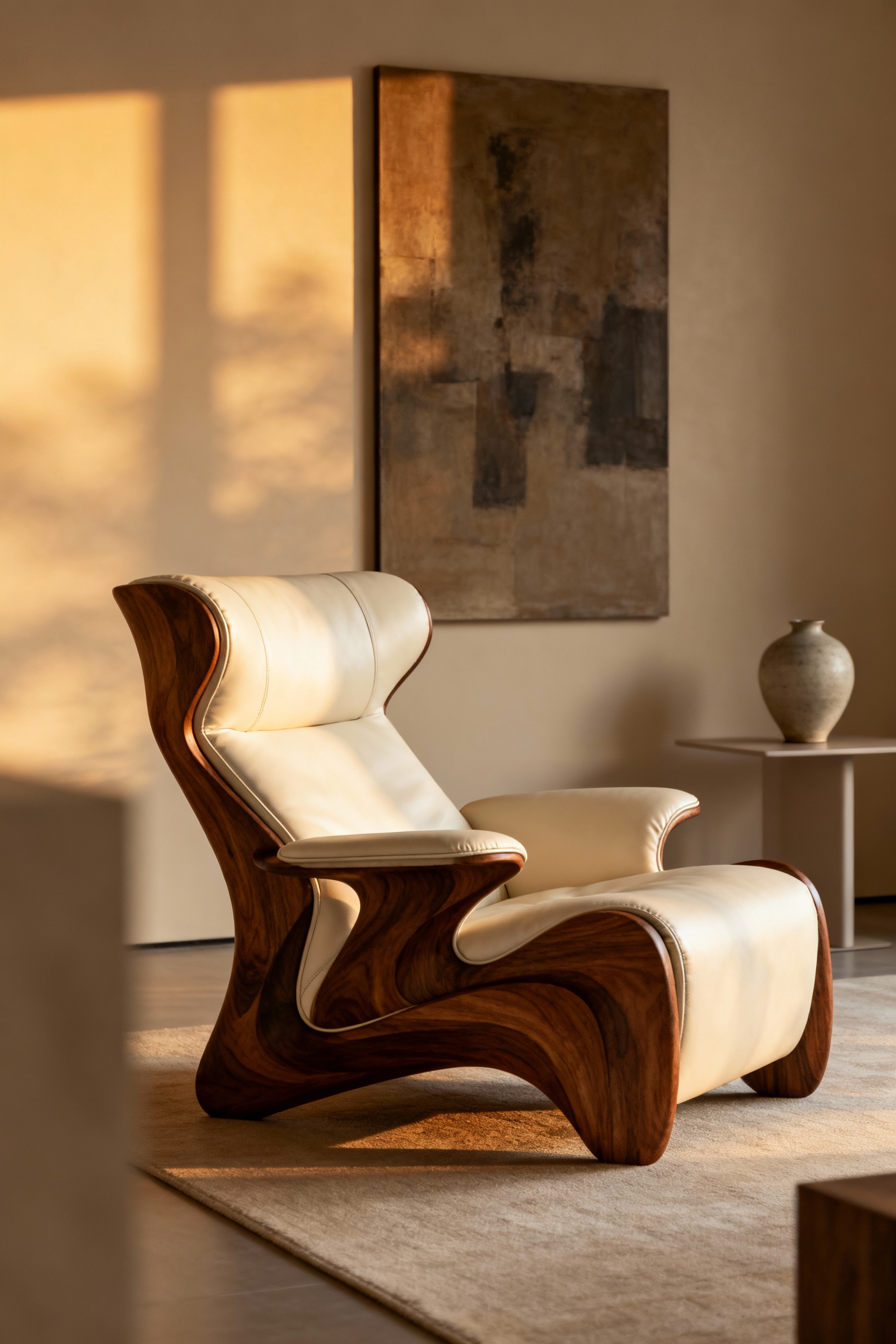
This is the ultimate curatorial act: choosing an object not because you should, but because it feels like an authentic extension of who you are. The chair becomes a silent partner in your daily life, a physical manifestation of your values and your aesthetic. When you find that piece, you’ve done more than furnish a room. You’ve authored a small, perfect corner of your world.
Conclusion
Our exploration of these twenty principles reveals the living room chair not as a simple commodity, but as a central piece of art within your home. It’s a sculptural form, a personal statement, and a functional sanctuary. By approaching this choice with the eye of a curator, you move beyond mere decoration and into the realm of intentional living, where every object has a purpose and tells a part of your story.
Let this guide serve as a new way of seeing—a way to recognize the profound potential held within this single object. The goal is to choose a piece that resonates deeply, one that offers not just a place to sit, but a connection to the broader world of art and design. May your living room chair be more than a piece of furniture; may it be a testament to a discerning eye and a life thoughtfully lived. In its considered embrace, you will find not just comfort, but a piece of yourself.
